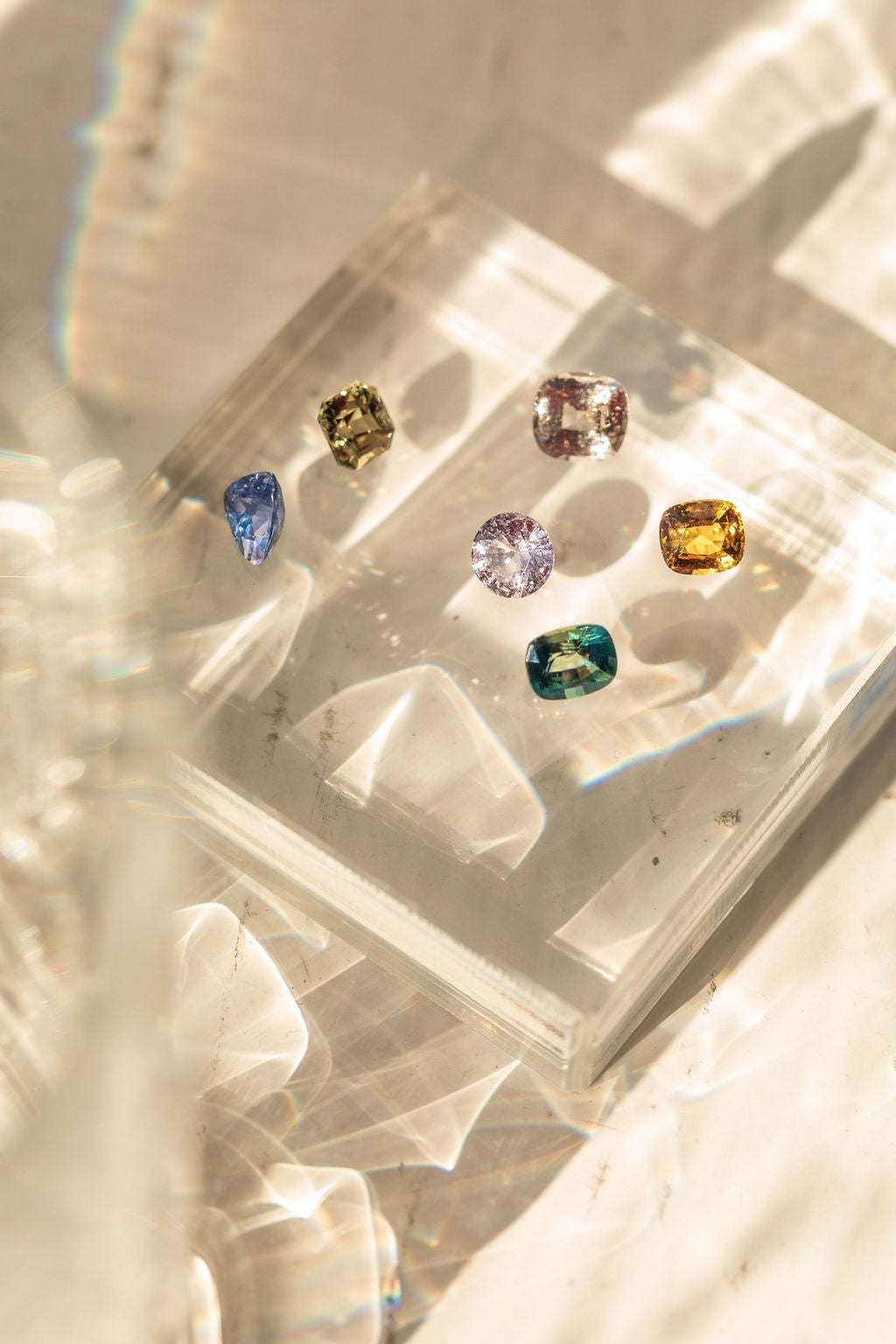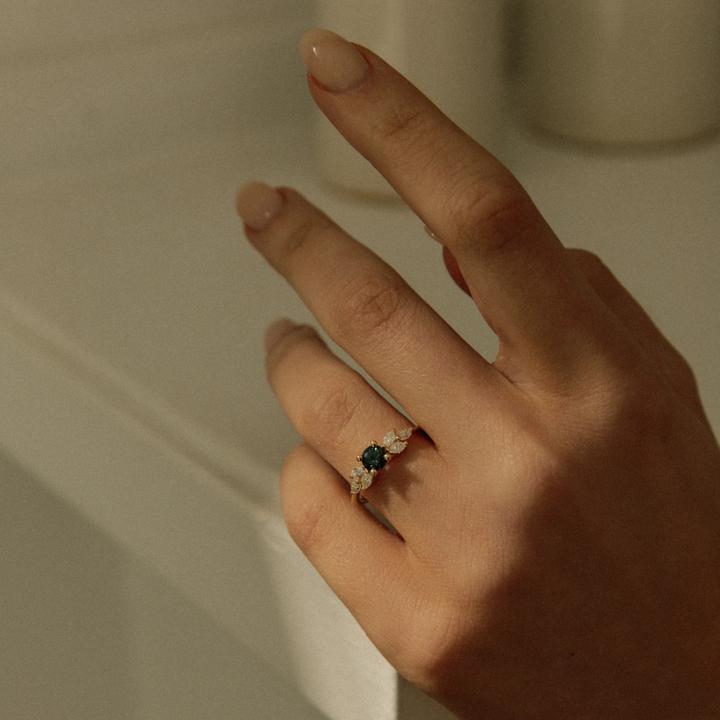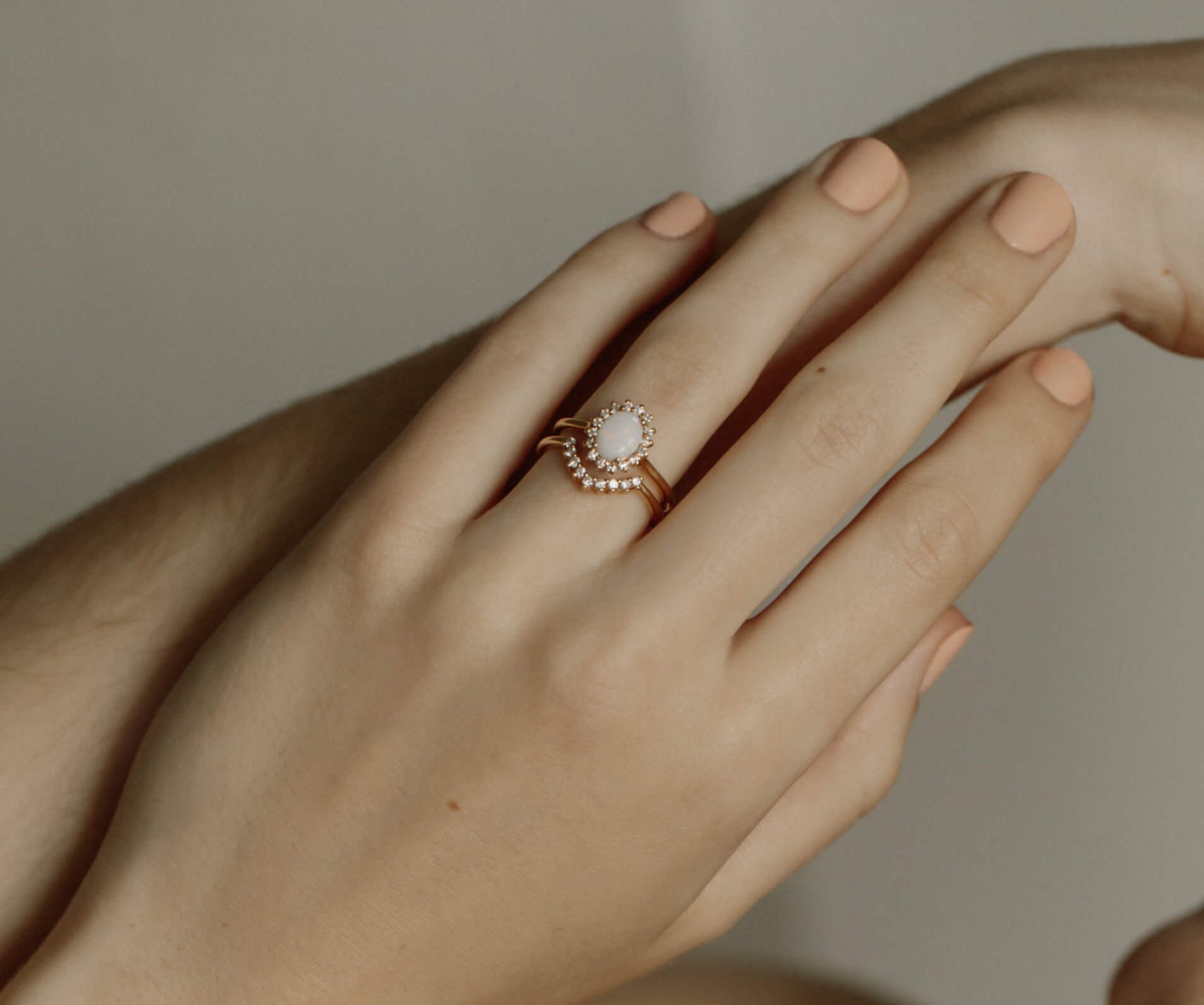The Ultimate Guide to Gemstones
All the gemstones, all the details. The know-it-all guide to all the stone options we have for each design


What is Morganite?
Morganite, named for world famous financier JP Morgan, is a mineral called beryl. It has a distinct pale pink to orange-pink colour, and has a Brilliance & Refractive Index of 1.58-1.59.
Morganite comes in varying shades of pale pink, rose, peach and salmon. Generally speaking, the more saturated the colour is, higher the stone is valued.
Morganite is rated as a 6 on the Mohs Scale of Hardness, where diamond is the hardest of all minerals with a value of 10. Please refer to the chart at the bottom of this page for more information.

What is Emerald?
Emerald is a product of the mineral beryl, coloured by chromium or vanadium. Its trademark is its rich green colour.
There are many varying colours of emerald, and no two are ever alike. The green colour ranges from yellowish green to blueish green. The intensity of the colour varies from light green to dark green. Choice of colour and its intensity is personal preference, however, the bluish rich green colour is known to be the most desirable. There are also varying amounts of inclusions in emeralds, making each stone very unique from the next. Inclusions are materials that get trapped in the stone during its formation. Inclusions in other stones such as diamonds are considered a flaw, but in emeralds, they add charm and natural beauty. The more clear and less opaque the stone is, generally it is valued more.
Emerald, or beryl, is rated as a 8 on the Mohs Scale of Hardness.

What is Sapphire?
Sapphire is a mineral called corundum. Corundum comes in various colours, and has a Brilliance & Refractive Index of 1.76-1.77.
Sapphires come in pretty much every colour of the rainbow, but the most common shades are blue, white, yellow, and pink. In more recent years, the teal colour, often referred to as Montana sapphire has been a very trendy colour. Within each colour, there are varying shades. Typically, the more intense the colour is, the better quality. In terms of deepness of the shade, medium to dark is the most desirable shade.
Sapphire is rated as a 9 on the Mohs Scale of Hardness.

What is Moonstone?
Moonstone is composed of two feldspar species, orthoclase and albite. The two species intermingle and as they cool, the two species separate into stacked, alternating layers. When light falls between these thin, flat layers, it scatters in many directions, creating its unmistakable glimmer and lustre. Moonstone has a Brilliance & Refractive Index of 1.52-1.53.
Generally the more transparent and colourless the stone, and more blue the shine, the higher the quality. The cloudier and more opaque the stones are more abundant, and therefore less desirable.
Moonstone is rated as a 6 on the Mohs Scale of Hardness.

What is Aquamarine?
Aquamarine is a product of the mineral beryl, and is a blue cyan colour. Aquamarine has a Brilliance & Refractive Index of 1.57-1.58.
Aquamarine comes in varying colours from very pale blue to clear sky blue to greenish blue. Typically richer the colour, more valuable the stone is.
Aquamarine is rated as a 8 on the Mohs Scale of Hardness.

What is Opal?
Opal is the product of rain that has soaked deep into ancient underground rock, carrying dissolved silica. After the evaporation of the water, the solid deposits left over forms opal. Opal has a Brilliance & Refractive Index of 1.37-1.42.
Opal comes in many different colours from white to black to blue. They all have the same characteristic of having a sheen of rainbow colours due to a similar effect as light travelling through a prism. For engagement rings, semi-transparent white opal with a splash of rainbow has been the most popular choice.
Opal is rated as a 6 on the Mohs Scale of Hardness.
Gemstone Care
Make sure to take care not to scratch your stone or knock it on hard surfaces. It can be washed with a mild foaming soap and warm water and left to air dry, or be dried with a microfibre cloth. Ultrasonic or steam cleaning is usually safe, but if your gemstone has inclusions or fractures, it’s best to make sure by consulting with your jeweller.
Ready to start designing your ring?
If you’re feeling overwhelmed, it’s a great idea to speak with us. We can advise you on what diamonds might be best for you and your budget—really, no question is too small or silly, we are here for you!














